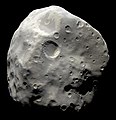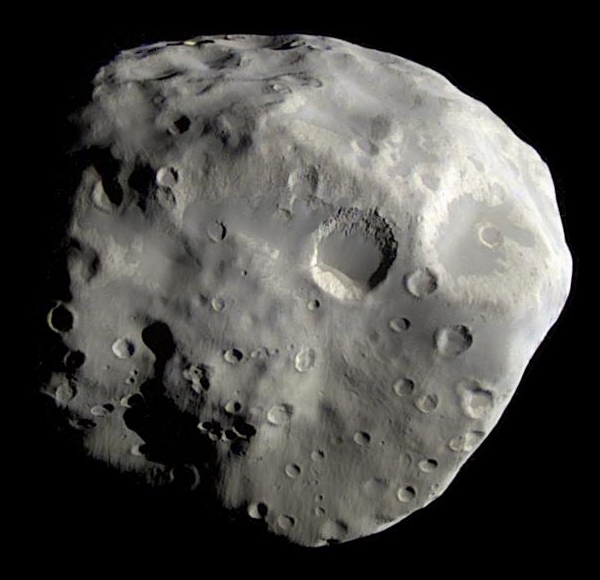Fil:PIA09813 Epimetheus S. polar region.jpg
PIA09813_Epimetheus_S._polar_region.jpg (600 × 580 pikslar, filstorleik: 153 KB, MIME-type: image/jpeg)

Følgjande er henta frå filomtalen åt denne fila på Wikimedia Commons:
Filhistorikk
Klikk på dato/klokkeslett for å sjå fila slik ho var på det tidspunktet.
| Dato/klokkeslett | Miniatyrbilete | Oppløysing | Brukar | Kommentar | |
|---|---|---|---|---|---|
| gjeldande | 6. januar 2013 kl. 00:49 |  | 600 × 580 (153 KB) | Antonsusi | Turn back ok, but the margin makes only a smaller, not optimised visible size of the object on pages. |
| 19. desember 2012 kl. 09:59 |  | 680 × 640 (222 KB) | WolfmanSF | Reverted to version as of 17:18, 11 January 2008 - Solar System objects are normally portrayed with north up, which means solar illumination comes from the side; also, there's no artistic advantage to eliminating the margin | |
| 9. januar 2011 kl. 04:39 |  | 580 × 600 (146 KB) | Antonsusi | cropped, turned upright | |
| 11. januar 2008 kl. 19:18 |  | 680 × 640 (222 KB) | WolfmanSF | replace with processed NASA image |
Filbruk
Den følgjande sida bruker denne fila:
Global filbruk
Desse andre wikiane nyttar fila:
- Bruk på af.wikipedia.org
- Bruk på als.wikipedia.org
- Bruk på ar.wikipedia.org
- Bruk på ary.wikipedia.org
- Bruk på arz.wikipedia.org
- Bruk på ast.wikipedia.org
- Bruk på as.wikipedia.org
- Bruk på be.wikipedia.org
- Bruk på bh.wikipedia.org
- Bruk på bs.wikipedia.org
- Bruk på ca.wikipedia.org
- Bruk på ckb.wikipedia.org
- Bruk på de.wikipedia.org
- Bruk på el.wikipedia.org
- Bruk på en.wikipedia.org
- Cassini–Huygens
- Epimetheus (moon)
- Wikipedia:Selected anniversaries/December 18
- Timeline of discovery of Solar System planets and their moons
- Moons of Saturn
- List of Solar System objects by size
- Naming of moons
- List of natural satellites
- User:Dabomb87/Sandbox
- Talk:Solar System/Archive 7
- Wikipedia:Main Page history/2012 December 18
Sjå meir global bruk av denne fila.


